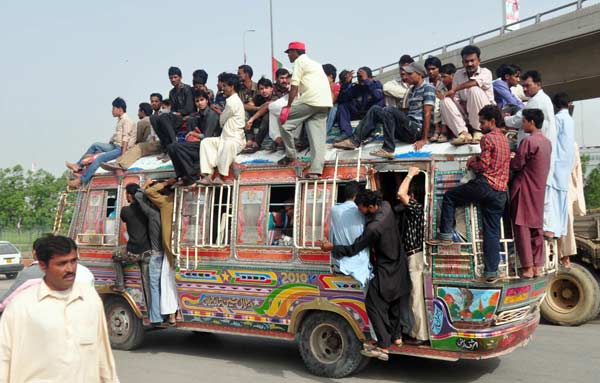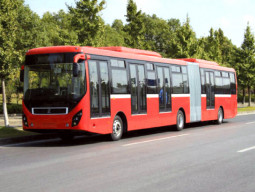
As efficient mass transit is a catalyst for economic and social growth, its absence in Karachi can be directly linked to many urban problems. Haphazard growth of residential areas, clogged roads and frustrated residents are all a result of a transport system which was never properly worked on nor integrated with the rest of the city development.
In transport-starved Karachi, fate of KCR hangs in balance
Here we take a look at how Karachi has suffered economically and socially because of its public transport system and what can be learnt from other urban centres.
Land use
Access to transport system defines how people choose their places to live and work and that is why relationship between transportation and land use is a key issue for sustainable development.
Karachi, which inherited a workable public transport system in 1947 with trams serving mandated corridors effectively, saw an exponential growth in the city’s population the following years. As a result, Karachi sprawled into the outer precincts, posing a real challenge for urban planners while placing an extraordinary demand on the ailing transport system. However, in the absence of integrated and efficient transport policies, Karachi’s land was gradually taken up by activities that did not generate value worthy of the location and produced the chaos that we live in today.
A lesson can be learnt from Brazilian city of Curitiba which experienced some of the highest growth in the country with phenomenal increase in its population for decades since the 50s. Recognising that transportation systems can serve as the backbone for the development and growth of the city in the future, the planners developed a system with the intention of dictating how and where the city grows. The master urban plan restructured the city’s radial configuration into a linear model of urban expansion through the construction of a consolidated public transportation system.
Economy
Economic growth is directly related to the mobility of people; at the aggregate level, efficient transportation reduces various costs as goods and services are delivered fast and workers are more productive. Going by this logic, the level of Karachi’s economic success can be gauged simply by examining the condition of its public transport system.
Despite being the largest city and country’s premier centre for banking, industry and trade, the administrators of Karachi have consistently failed to link the scattered workforce to areas of economic activities. While the city can rejoice in its status of Pakistan’s economic hub, much of its potential remains untapped as the workforce struggles to commute between their residence and place of work.
The city of Bogota in Columbia, crime-ridden and traffic-clogged like Karachi, built a transport system in the late 90s as a tool to tackle social inequality. Trans Milenio, which moves 1.7 million passengers every day, increased labour productivity over the years by connecting employees to their employers quickly and economically.
Quality of life
Efficient public transport is an indicator of social inclusion and economic development at the individual level. A dysfunctional transport system, which people use because there is no other choice, is counterproductive to the well-being of the city’s population. In fact, it becomes an important contributor in creating ills in society such as a disgruntled population which travels for several hours before reaching its destination.
Karachi’s transport system in chaos
Karachi, often declared as one of the worst cities to live in, can put much of the blame on its non-existent public transport system because of which residents remain stuck in traffic jams for hours, reach office late and have less time to spend with family and friends.
To highlight the connection between quality of life and public transport, take a look at Paris tramway line T3 which opened in 2006 and served an estimated 25 million passengers during its first year of operation. The line facilitated a 25% decrease in car use and resulted in total social benefits of about €550,000 per year. Similarly, the positive life indicators in Bogota also improved exponentially with improved transit.
If there is ever an upswing in the quality of public transport in Karachi, the positive indicators will reflect on the holistic socio-political structure of the city reforming lifestyles and much needed growth across all sectors.
Environment
One of the worst and most important effects of not having a good public transport system is on the environment. Inefficient public transport affects the environment in ways we cannot imagine. Sometimes the signs are visible like smog, which often dominates the air in Karachi. But sometimes the signs are not as immediate and manifest themselves slowly over the passage of time like poor physical and mental health.
Public transit improves environment by not just replacing personal cars carrying one to two persons each with a bus carrying 40 passengers, it also encourages people to adopt healthier alternatives such as walking or riding a bike to the bus station.
A good example would be of Madrid in Spain which significantly reduced its carbon footprint and improved its air quality by introducing a mobility plan that fosters the use of public transport and bikes. As a direct result, use of private vehicles fell from 37% in 2006 to 24% in 2014.
Ali Lawati is a transportation consultant and a published author.

































COMMENTS (3)
Comments are moderated and generally will be posted if they are on-topic and not abusive.
For more information, please see our Comments FAQ